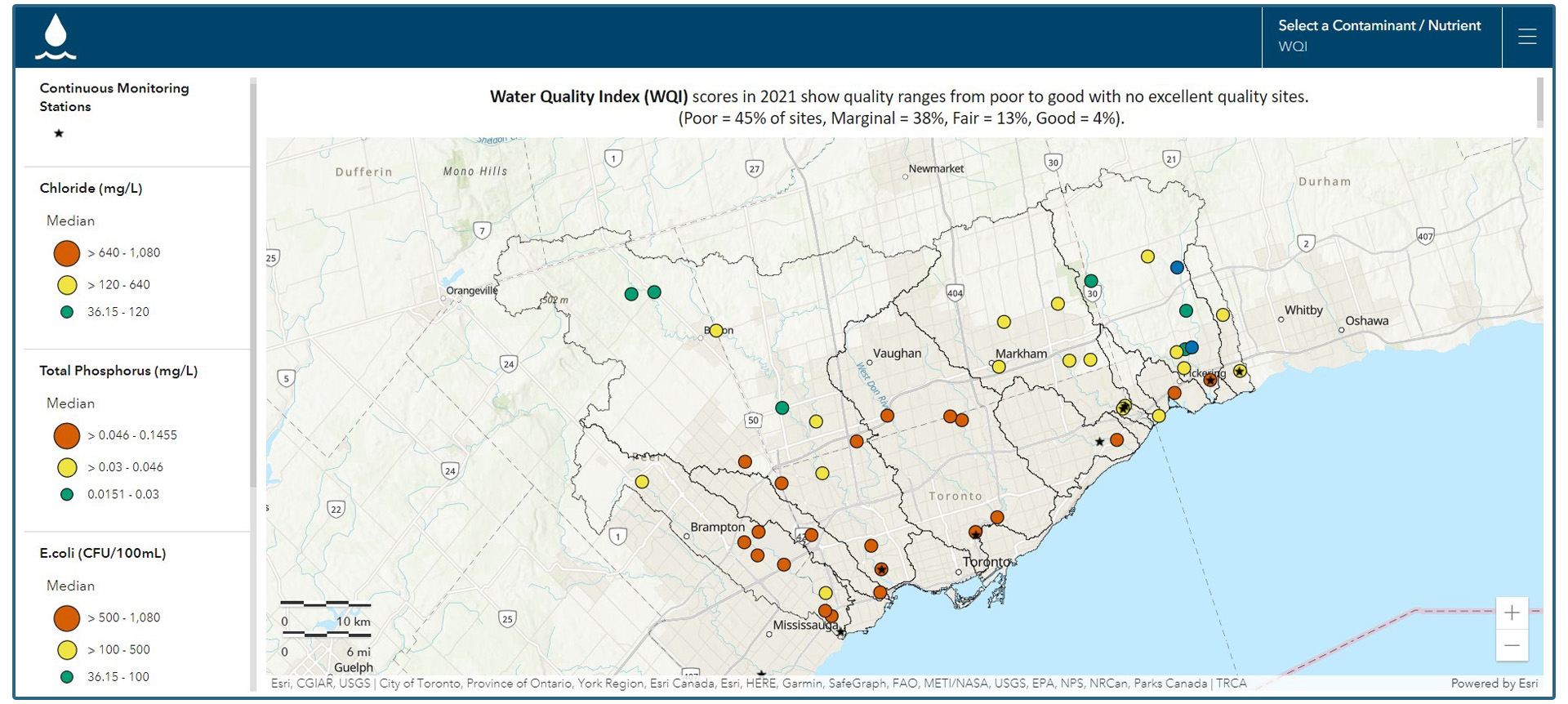Monitoring water chemistry, metals, and bacteria helps scientists understand the impacts of land use on the water quality of the streams that ultimately flow into Lake Ontario.
VIEW SURFACE WATER QUALITY RESOURCES
What Are We Monitoring?
Since 2002, TRCA has partnered with the Ontario Ministry of the Environment, Conservation and Parks (MECP) to monitor surface water quality across the region’s watersheds.
Water quality samples are collected monthly as part of MECP’s Provincial Water Quality Monitoring Network, as well as from additional sites across the jurisdiction.


The water quality grab samples are analyzed for a standard suite of water quality parameters, including metals, nutrients, and bacteria.
More than 500 water quality samples were processed from approximately 50 sites in 2020.
What Are The Data Telling Us?
Water quality conditions are directly linked to the land use upstream of a monitoring station.
Non-point source contamination from urbanization (runoff), such as sediment, nutrients and road salt, continues to be the largest contributor to poor water quality conditions within TRCA’s jurisdiction.
Point sources of contamination, such as discharge from wastewater treatment plants and industries, also contribute to the degradation of water quality.
Select the image below to view our Stream Water Quality dashboard.
Certain contaminants, such as total phosphorus, have decreased over the past 20 years, while others, such as chloride (derived from road salt), show an increasing trend.
Chloride can be toxic to aquatic organisms. These organisms are affected both by short-term high concentrations (acute effects), and by lower concentrations over the long term (chronic effects).
Select the image below to view our Stream Water Quality dashboard.
TRCA’s Sustainable Technologies Evaluation Program (STEP) is currently working on projects provide winter maintenance practitioners with more tools to safely and effectively control snow and ice using less road salt. LEARN MORE.
Ongoing water quality monitoring will continue to track chloride concentrations in our regional streams, and we will use these data to examine the impacts of chloride on the aquatic ecosystem.
Visit TRCA’s Watershed & Ecosystems Reporting Hub
Surface Water Quality Resources
Click to Open Library
Regional Watershed Monitoring Program:
Surface Water Quality Summaries
| 2020 | 2019 | 2018 | 2017 |
| 2016 | 2013 | 2012 | 2011 |
| 2010 | 2009 | 2006-2010 |
- Spatial Patterns (2016-2020) and Temporal Trends (1966-2020) in Stream Water Quality across TRCA’s Jurisdiction, 2021
- Regional Watershed Monitoring Program: Surface Water Quality Summary Spatial Trends Update, 2011-2015
- Regional Watershed Monitoring Program: Surface Water Quality Summary Temporal Trends Update, 2011-2015
Contact
TRCA Watershed Planning and Ecosystem Science: wpes@trca.ca


